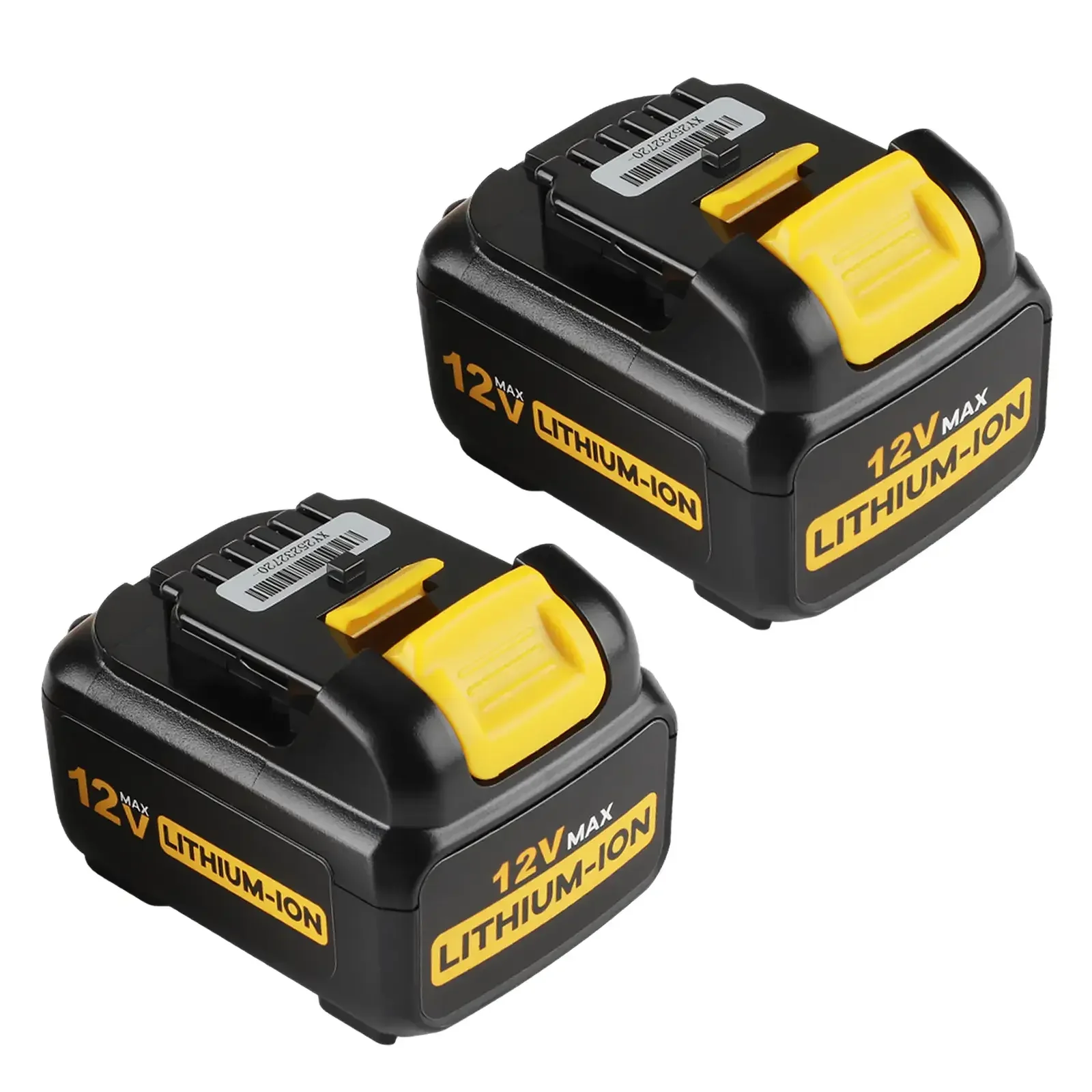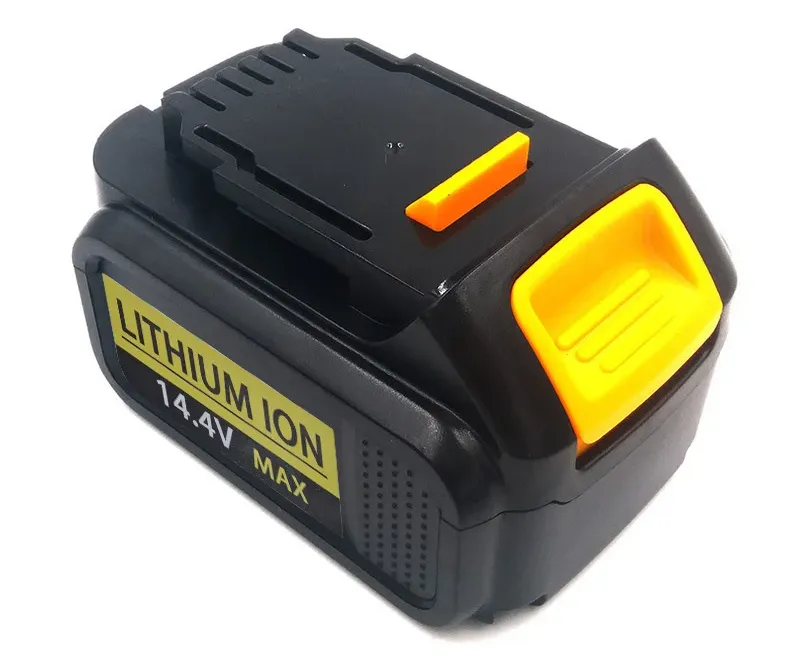Top 10 Expert Tips for Preserving Your DeWalt 20V Battery Life
DeWalt batteries deliver exceptional power and runtime for demanding jobs—but only if they’re cared for properly. Follow these industry-backed best practices to maximize capacity, prevent premature degradation, and keep your tools running at peak performance.

To maximize the service life of your DeWalt 20 V battery, always charge and discharge it within the manufacturer’s recommended temperature range (approximately 50 °F to 86 °F) using only the official DeWalt charger, which ensures precise voltage regulation and reliable thermal protection. Never allow the battery to fully deplete; recharge once power drops below 20 percent to slow chemical wear, and if you won’t use the pack for more than a week, store it at roughly 40–60 percent charge to minimize self-discharge and capacity fade. Keep at least two batteries in rotation so that one can cool while the other works, and always wipe the contacts with a dry, lint-free cloth before and after use to prevent corrosion and reduce resistance. After any heavy load or charging cycle, let the battery rest for at least thirty minutes before redeploying to allow internal temperatures to normalize. Finally, store your batteries in a cool, dry, well-ventilated area away from direct sunlight or heat sources, and inspect them every six months for swelling, cracks, or unusual heat—retire any pack showing signs of aging or damage to maintain both performance and safety.
1. Always Use the Recommended Charger
Using DeWalt’s official charger ensures the correct voltage curve and charge rate for Li-ion cells. Third-party chargers can lack accurate current regulation, leading to overvoltage stress or incomplete charging cycles—both of which accelerate capacity loss.

2. Let Batteries Cool Down Before Charging
Allowing your battery to cool for at least 30 minutes after heavy use prevents charging while cells remain hot, which can accelerate chemical degradation and capacity loss. Hot cells are more prone to voltage imbalance and thermal runaway, reducing overall lifespan and posing safety risks. By waiting until the pack returns to room temperature (50–86 °F), the charger’s temperature sensors can accurately manage charging currents, ensuring each cell receives a balanced, controlled charge for consistent performance and longer service life.
3. Avoid Deep Discharge Below 20–30%
Avoiding deep discharge below 20–30 percent prevents excessive strain on your DeWalt 20 V battery’s cells. When you let the charge fall too low, cell chemistry endures higher stress during recharge, accelerating capacity loss and reducing cycle life. By topping up before the pack drops below this threshold, you maintain a stable voltage window, minimize irreversible chemical changes, and ensure more consistent runtimes. Shallow, frequent charges ultimately translate into hundreds more reliable cycles and longer overall battery lifespan.
4. Store at Optimal Temperatures
Storing your DeWalt 20 V battery at optimal temperatures—ideally between 50 °F and 77 °F (10–25 °C)—is essential for preserving its capacity and extending service life. Exposure to high heat accelerates chemical aging and can lead to swelling or leakage, while cold temperatures increase internal resistance, reducing performance and risking permanent damage if the battery freezes. Choose a dry, temperature-stable environment away from direct sunlight, heaters, or uninsulated garages. Proper storage conditions prevent self-discharge, maintain cell balance, and ensure your battery delivers full power when you need it.
5. Match Tool Load to Battery Capability
Choosing the correct battery for your tool’s load ensures efficient performance and prevents overheating or premature wear. If your tool demands high amperage under heavy load—such as during drilling or sawing—pair it with a battery rated for those current draws. Undersized packs will struggle, generating excess heat and reducing run time, while oversized packs can be wasteful and bulky. Match voltage and amp-hour specifications to your tool’s requirements and consult the manufacturer’s guidelines for optimal pairing, ensuring balanced load distribution and a longer battery lifespan.

6. Keep Contacts Clean and Dry
Oxidation or debris on battery and tool terminals increases contact resistance, causing localized heating and inefficient power transfer. After every few uses:
Keep battery and tool contacts free of dirt, dust, and corrosion by wiping terminals with a dry, lint-free cloth before and after each use. For stubborn grime, lightly brush contacts with a soft nylon brush or apply a contact-cleaning solution, then let them air-dry completely. Clean, dry terminals ensure low electrical resistance, uniform charging, and optimal power transfer. Regular maintenance prevents heat buildup, voltage drops, and premature cell wear—keeping your cordless tools reliable and extending battery life.
7. Rotate Multiple Packs Regularly
Regularly alternating between two or more DeWalt 20V batteries any single battery from enduring continuous heavy use and excessive heat buildup, both of which accelerate cell wear. By swapping in a fresh pack once one reaches mid-use temperatures, you allow the previous battery ample time to cool to ambient conditions, reducing thermal stress on its internal chemistry. This practice also ensures that all your packs age evenly—avoiding the scenario where one overworked battery prematurely degrades while others remain underutilized. Over time, a balanced cycle count and consistent rest periods translate into a longer overall service life for your entire battery fleet.
8. Shield from Moisture, Dust & UV Exposure
Protecting your DeWalt 20 V battery from moisture, dust, and UV exposure is critical to preserving both performance and safety. Moisture can corrode terminals and seep into the battery housing, risking short circuits and chemical degradation. Dust buildup around contacts impairs electrical conductivity, leading to inefficient power transfer and overheating. Prolonged UV exposure from direct sunlight breaks down plastic casings and accelerates internal aging. To safeguard your battery, store it in a clean, dry, and shaded environment—ideally inside a protective case or cabinet—and avoid leaving it in tool bags or vehicles exposed to the elements. This preventative care extends battery lifespan and ensures consistent, safe operation.
9. Use Reconditioning or “Refresh” Programs
Many DeWalt chargers offer a reconditioning mode that performs controlled deep discharge and slow recharge to recalibrate the battery management system (BMS). Run this cycle every 6–12 months to correct state-of-charge misreads and restore up to 5–10% of lost capacity.
Using reconditioning or “refresh” programs—available on select smart chargers—can help restore the health of your DeWalt 20 V battery by balancing cell voltage and breaking down memory effects, especially in older or irregularly used packs. These programs work by cycling the battery through controlled discharge and recharge phases, recalibrating the battery management system and equalizing internal cell levels. While modern lithium-ion batteries don’t suffer from classic memory loss like older NiCd packs, occasional reconditioning can still optimize performance, extend usable capacity, and ensure more accurate charge level readings. Use this feature sparingly—typically every few months or after noticeable performance drops—to keep your battery running at peak efficiency.
10. Follow DeWalt’s Care Guidelines
Following DeWalt’s official care guidelines is essential for maximizing the performance, safety, and lifespan of your 20 V battery. These manufacturer recommendations are based on extensive testing and engineering, ensuring the battery operates within its optimal range. Key practices include using only DeWalt-approved chargers, avoiding exposure to extreme temperatures, charging at room temperature, and storing batteries at 40–60% charge when not in use. Additionally, DeWalt advises removing the battery from the tool during long storage periods, inspecting for damage regularly, and avoiding over-discharge. By adhering strictly to these guidelines, you not only maintain your battery's reliability but also uphold warranty coverage and ensure safe operation across all compatible tools.

DEW-14V4-LI Replacement 12V Battery for Dewalt tools compatible with Multiple models
Quick-Reference Table of Key Practices
| Practice | Optimal RRange/requency | Benefit |
|---|---|---|
| Charge Temperature | 68–77°F (20–25°C) | Minimizes thermal stress |
| Storage Temperature | 40–80°F (4–27°C) | Slows chemical degradation |
| Depth of Discharge | 20–30% before recharge | Extends cycle life |
| Reconditioning Interval | Every 6–12 months | Recalibrates BMS, restores capacity |
| Contact Maintenance | Inspect & clean monthly | Ensures efficient current transfer |
| Tool Load Matching | Use lowest-draw tool for the job | Reduces heat spikes and voltage sag |
Frequently Asked Questions
How Long Can DeWalt Batteries Last?
With proper care, expect 2–3 years or 500–1,000 full-equivalent charge cycles. Shallow-cycle habits and correct storage can push lifespan toward the upper end of that range.
Can I Leave My Battery on the Charger?
Modern DeWalt chargers automatically cut off at 100%, but prolonged trickle modes may still stress cells. Unplug within one hour of reaching full charge.
What Affects Battery Lifespan Most?
Heat is the No. 1 enemy—whether from tool load, ambient conditions, or incorrect charging. Next is deep discharge; avoid cycling below 20%.
By integrating these expert tips into your routine, you’ll maximize the life and reliability of every DeWalt 20V battery you own—saving time, money, and frustration on the jobsite.